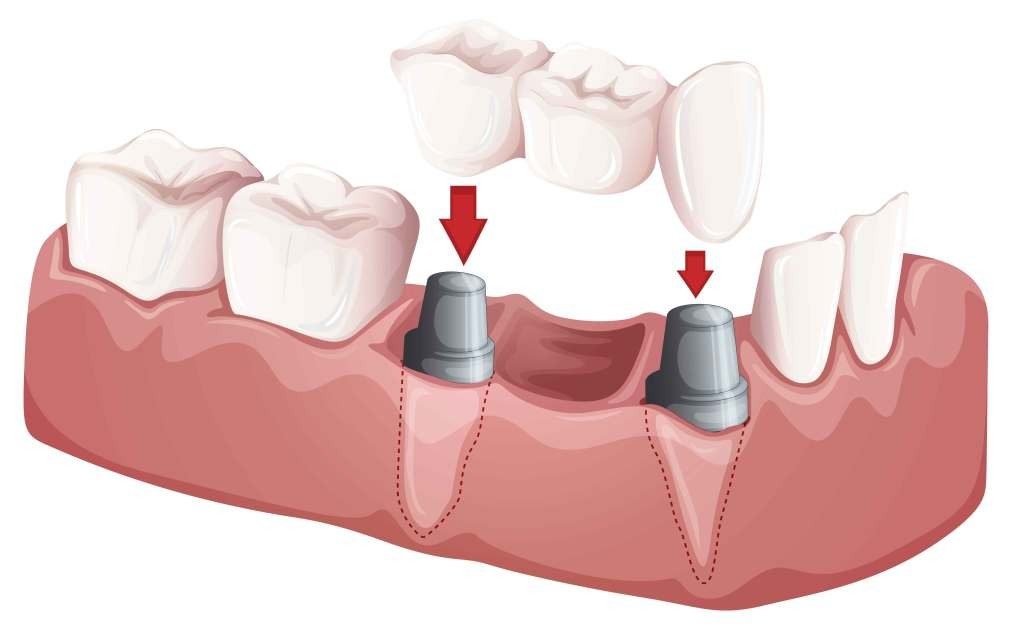Missing teeth can cause serious problems. Your teeth on each side of the gap can shift toward the gap, leaving you with crooked teeth and an uneven bite. The gap can also be a trap for soft tissues, causing you to bite your cheeks or tongue when you chew. One of the solutions we offer is a dental bridge.

What Is a Dental Bridge?
A bridge is an artificial tooth called a pontic that holds the place once held by a natural tooth. The artificial tooth is held in place by the abutment teeth on each side. We put crowns on these teeth and attach the pontic to it. Most bridges are fixed bridges, which means that once we put them in, you do not take them out. They become a permanent part of your attractive smile.
Advantages of Bridges
When you come to us with missing teeth, we evaluate whether a bridge would be right for your unique situation. If we recommend a bridge, consider these advantages:
- Restore or maintain your straight smile.
- Allows you to chew and speak properly.
- Maintains or restores the natural shape of your face.
- Gives you an even bite.
- Prevents teeth from shifting.
- Prevents injuries to your cheeks and tongue.
- Reduces risk for periodontal disease.
Preparing the Teeth
We start the procedure of placing a bridge by numbing the area with a local anesthetic. Next, we shape the teeth that will become the abutment teeth to prepare them for the crowns. We take impressions of these teeth, the gap, and the surrounding teeth. With ourCEREC system, we can take digital impressions to spare you the discomfort of traditional impression trays. We use the impressions to create the bridge, with its crowns and pontic. With CEREC, we can do this as you wait.
Inserting the Bridge
The next step in the bridge procedure is to check the bridge for fit. After we ensure the bridge will fit properly, we cement it into place. When this is finished, your teeth will look and feel as natural as they did before you lost the teeth.
Long-Lasting Restoration
How long can you expect a bridge to last? Typically, a bridge can last 5 to 15 years. In some cases, they last even longer.
Taking Care of the Bridge
The best way to take care of a bridge is to take care of your teeth in general. Floss your teeth each day and brush twice a day. Remember that missing teeth can cause shifting. Thus it is important to make sure you do not lose any other teeth along the way. Eat a healthy diet as well, to ensure excellent oral health. Schedule routine examinations as usual, keep those appointments, and let the dentist know about any problems that arise.
Schedule a Consultation
Come in for a visit to our West Metro Dental office to find out if a bridge is right for you. We assess your case and make recommendations based on your individual situation. Once we decide how to proceed, we can do the restoration and give you back your best smile!


